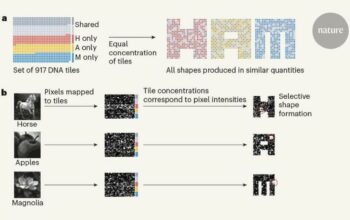As the boundary between the intricate worlds of biology and physics continues to blur, biophysics emerges as a fascinating discipline. For prospective medical students, the question arises: Is biophysics a suitable pre-med major? The exploration of this topic reveals not only the advantages of a biophysical education but also the profound insights it can offer into the workings of life itself.
Biophysics can be likened to a multi-faceted prism, reflecting light in myriad colors, each hue representing a different aspect of the life sciences. It is this multifarious nature that makes biophysics an attractive pre-medical path. To delve into the fusion of these two fields, it is essential to understand what biophysics encompasses and how its principles apply to medicine.
At its core, biophysics is the application of the principles and techniques of physics to the understanding of biological systems. It marries the quantitative rigor of physics with the complexity of biological systems, creating a rich tapestry of interconnected knowledge. This allows students to study phenomena from molecular interactions to cellular behaviors, offering a comprehensive understanding of the life sciences.
One of the most compelling arguments for choosing biophysics as a pre-med major lies in the rigorous analytical skills it nurtures. In a world where medical science increasingly relies on quantitative analysis and data interpretation, the ability to think critically and analytically becomes paramount. Through courses that delve into thermodynamics, kinetics, and molecular dynamics, students develop a robust framework for understanding how biological processes are governed by physical laws.
Moreover, biophysics provides an unparalleled platform for exploring cutting-edge medical technologies. Consider, for instance, the realm of medical imaging techniques such as MRI and PET scans. These methods rely heavily on principles derived from physics, translating them into tools for clinicians. A thorough grounding in biophysics not only equips future physicians with the knowledge of how these technologies work but also empowers them to innovate or improve upon existing methods in their practice.
Additionally, the interdisciplinary nature of biophysics fosters a holistic approach to medical education. Physicians are often required to engage with a diverse range of scientific disciplines throughout their careers. Knowledge gained through biophysics can seamlessly integrate with pharmacology, molecular biology, and genetics. This integration is crucial as modern medicine increasingly leans toward personalized treatments and therapies that require a deep understanding of the interplay between physical forces and biological systems.
Incorporating biophysics into a pre-med curriculum does not merely serve as a preparation for medical school; it cultivates a mindset. Students trained in biophysics often demonstrate an innate ability to approach problems from unique angles, considering not just biological implications but also the underlying physical mechanisms. This holistic perspective is vital when confronted with complex clinical situations, as it empowers physicians to devise innovative solutions that might elude those with a more conventional educational background.
However, the journey through biophysics is not without its challenges. The curriculum is often rigorous, encompassing advanced mathematics and physics that can be daunting. Yet, it is worth noting that the struggles encountered pave the way for profound intellectual growth. Students are not merely absorbing information; they are learning to think critically and abstractly, skills that will serve them well throughout their medical careers.
Moreover, the eclectic nature of biophysics leads to opportunities for collaboration and research. Engaging in research projects that explore the frontiers of medical science—such as the mechanics of blood flow, biophysical imaging techniques, or molecular biomechanics—can be both enriching and rewarding. Such experiences often result in publications or presentations that bolster a medical school application, showcasing a commitment to scientific inquiry that is admired by admissions committees.
The synthesis of biophysics and medicine also permits students to contribute to the burgeoning field of medical technology. From developing biocompatible materials for implants to creating innovative drug delivery systems, the possibilities are vast. As techniques in biological engineering advance, the input of individuals with a strong background in both biology and physics will be pivotal. They serve as the architects who bridge the gap between theoretical science and practical applications, ushering in new paradigms in healthcare.
In contemplating whether biophysics is a good pre-med major, students should reflect on their own aspirations and interests. For those captivated by the underlying mechanics of life and a desire to unravel complexities through a scientific lens, biophysics presents a unique opportunity. The field is not simply a conduit to medical school; it serves as a crucible where passion for discovery is forged into a tool for healing.
In conclusion, the fusion of biophysics and medicine represents a confluence of knowledge that is both profound and rewarding. As the biophysics landscape evolves, it is poised to play an increasingly vital role in the future of healthcare. Students who embark on this path will find themselves at the forefront of biomedical innovation, equipped with a unique perspective that will enrich both their medical practice and the lives of their patients.









